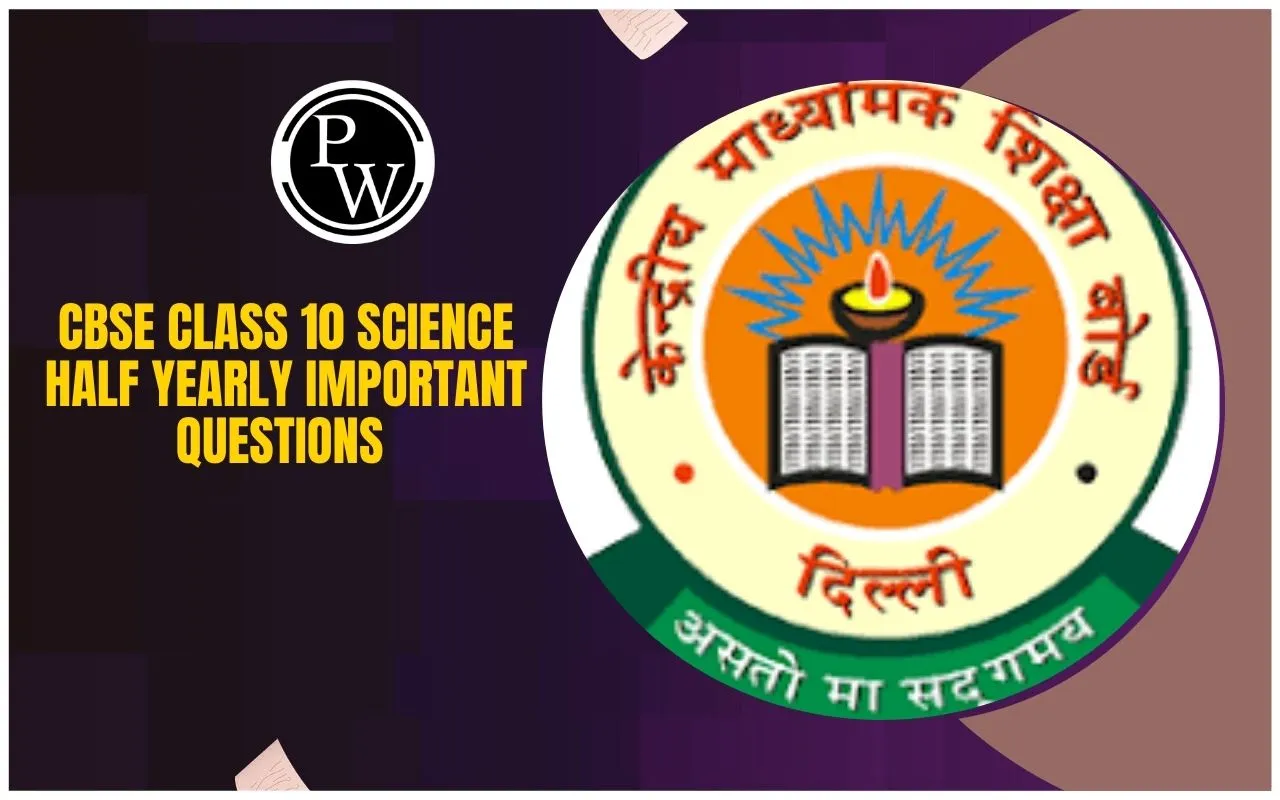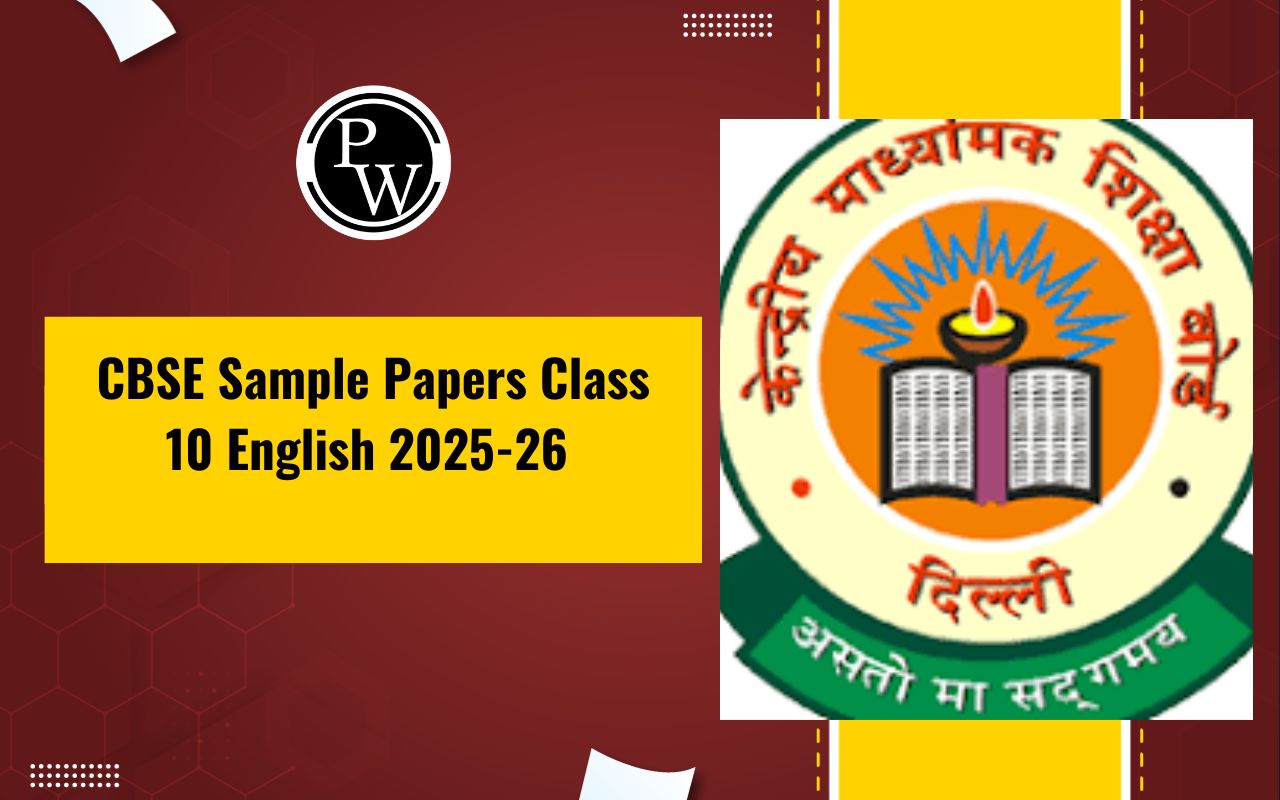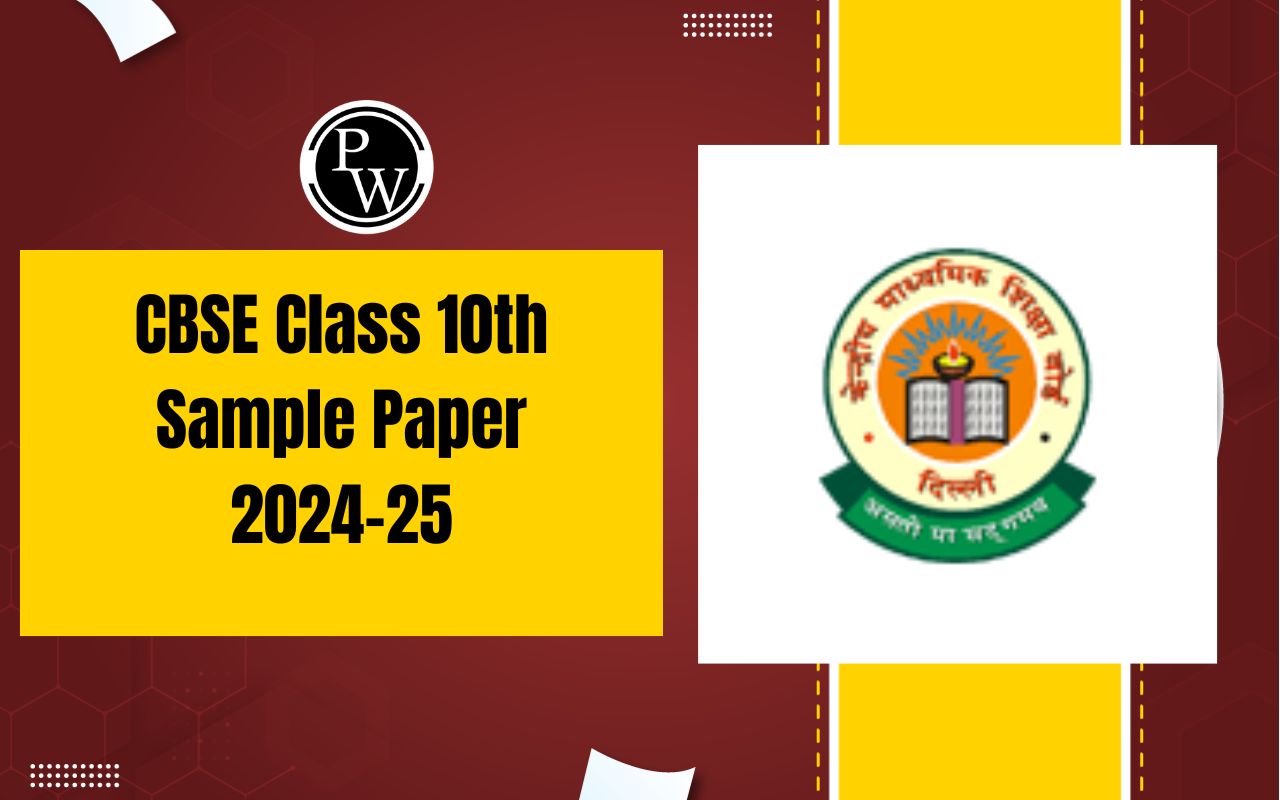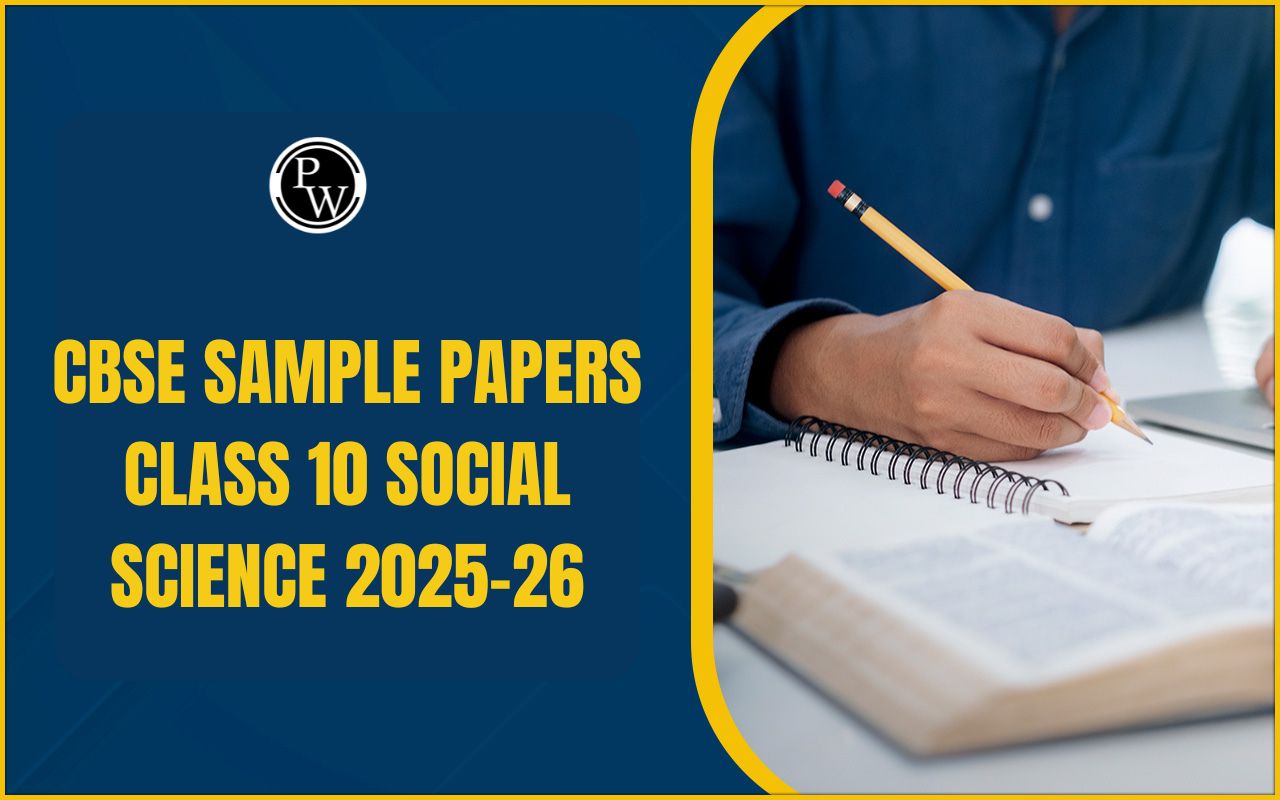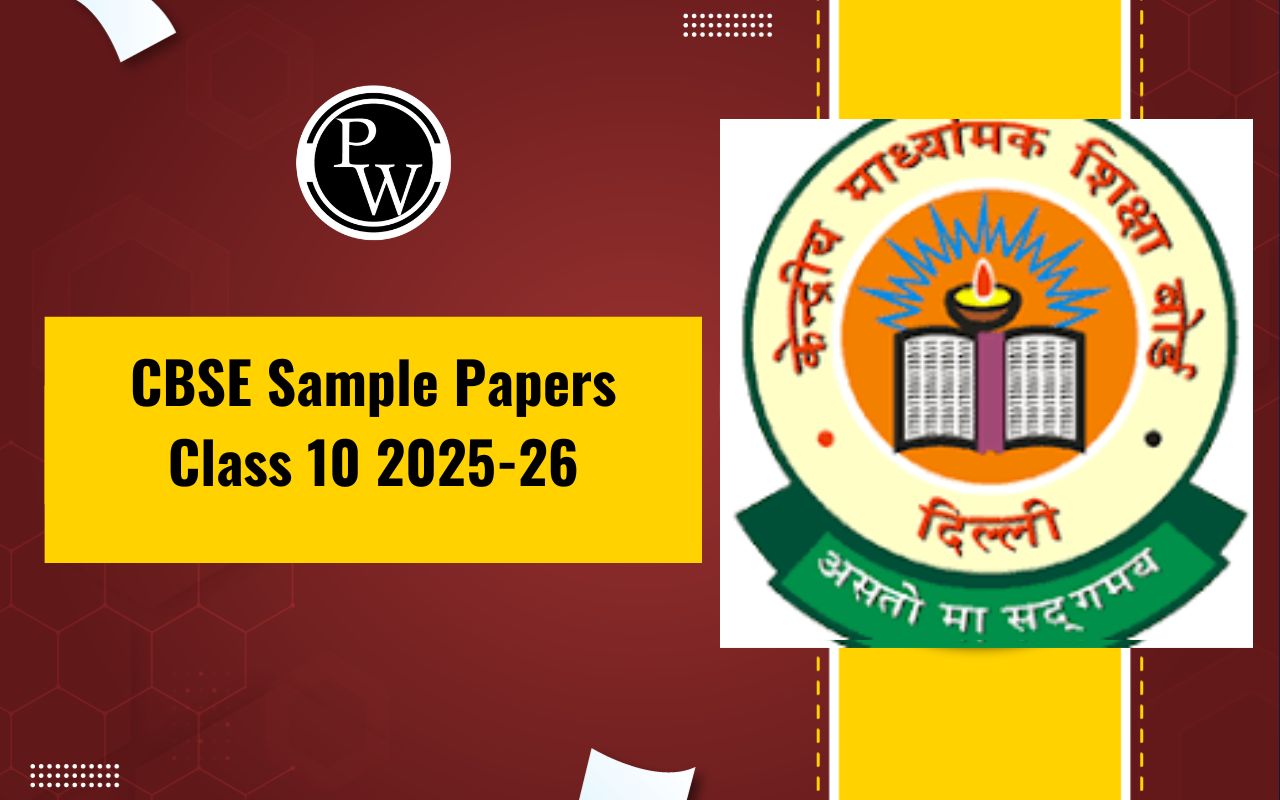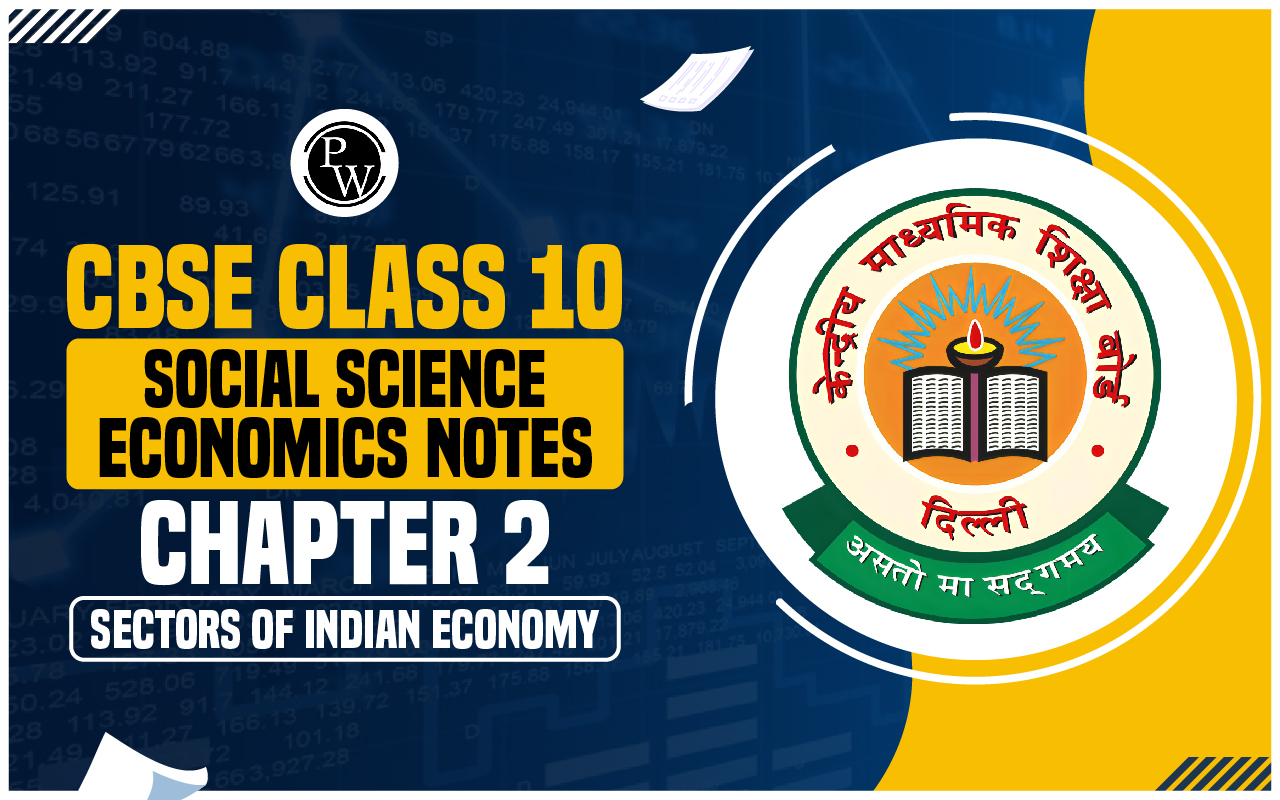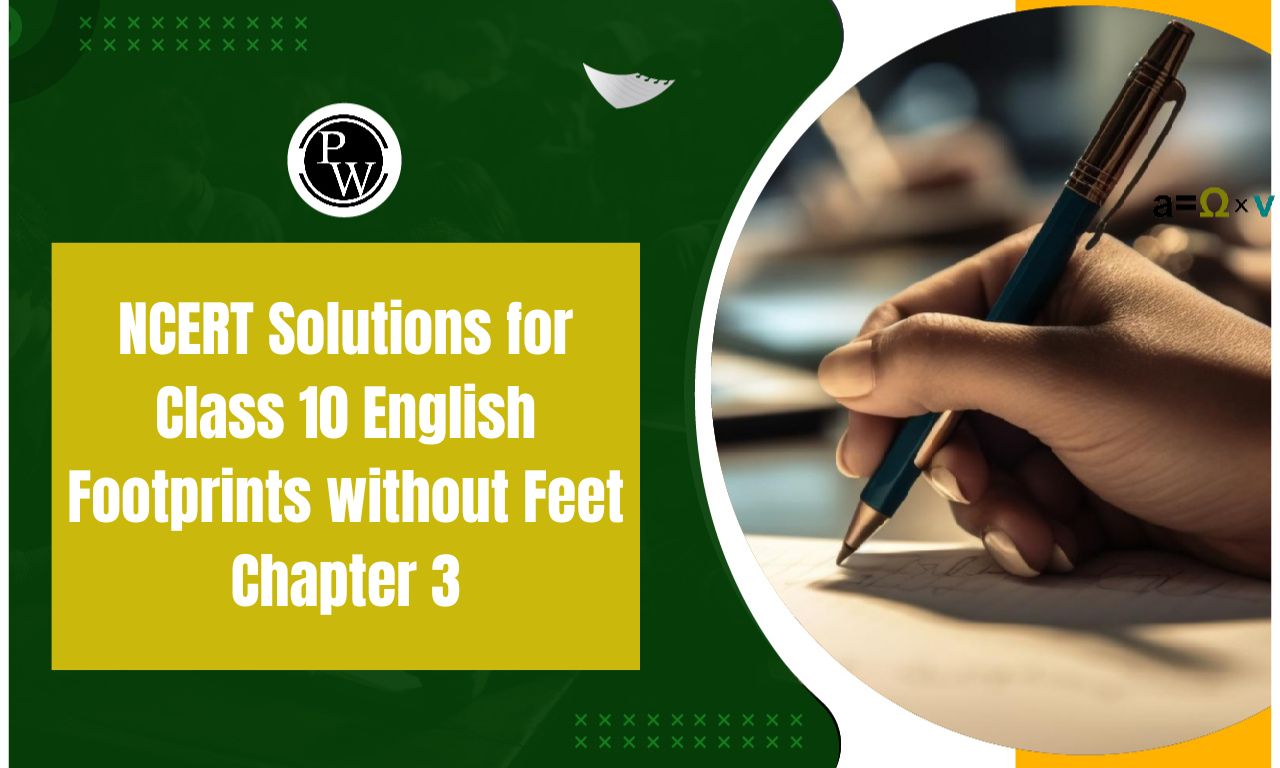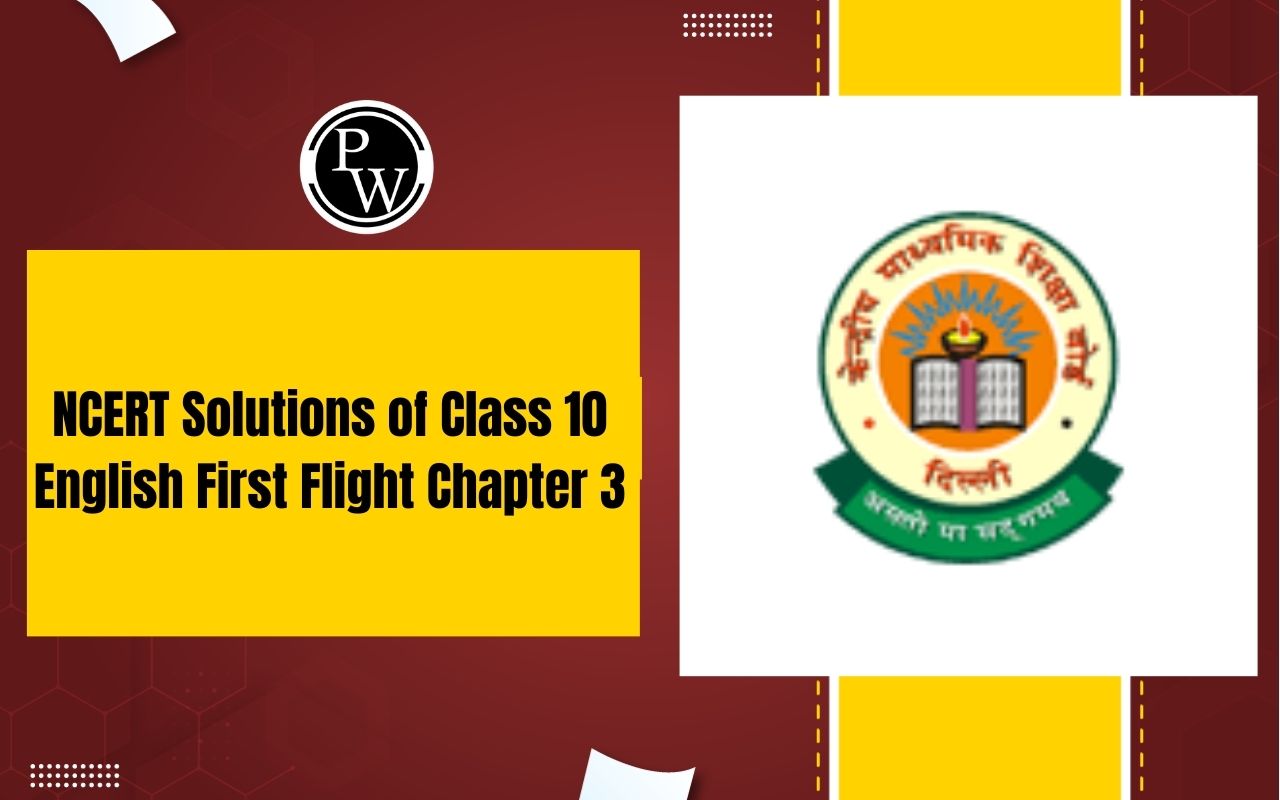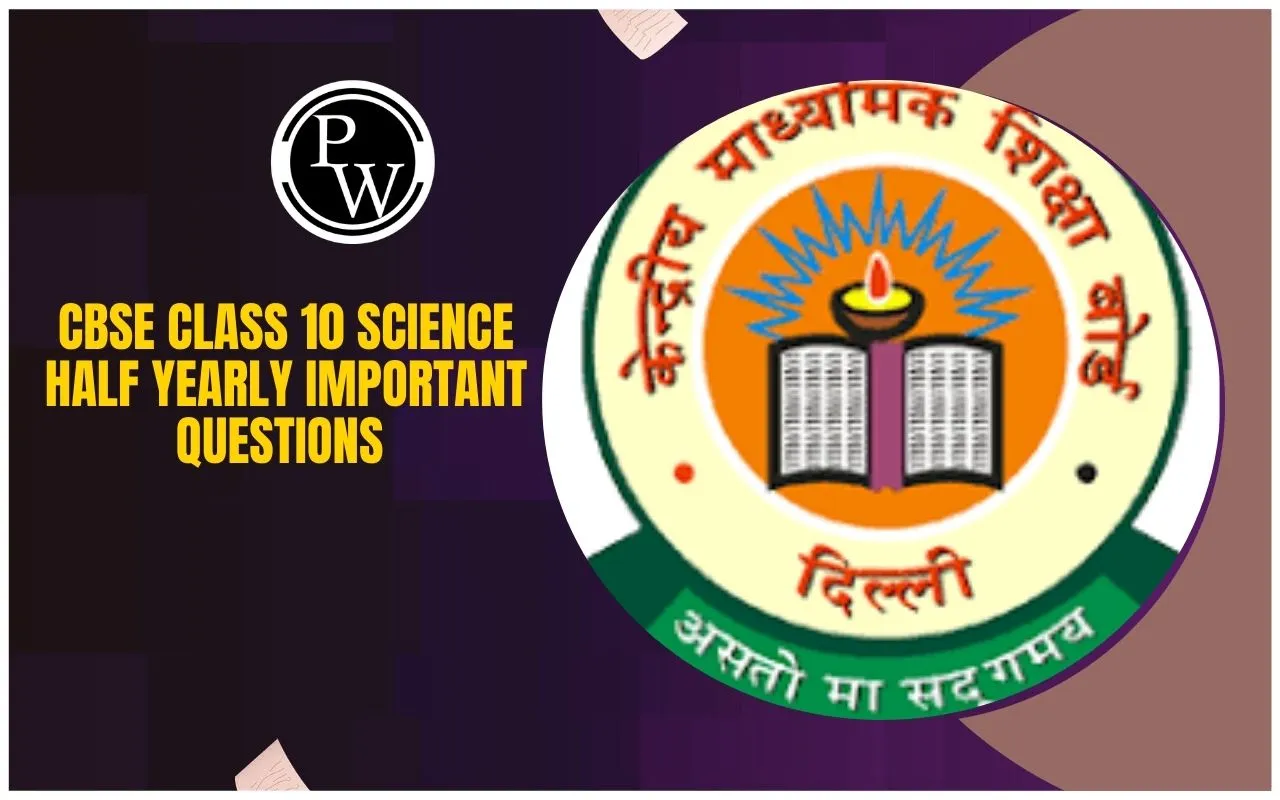
CBSE Class 10 Science Half Yearly Important Questions 2025-26 are prepared by teachers from Physics Wallah. These questions cover all the important chapters and concepts from the syllabus.
Solving these important questions will guide students in revising efficiently and performing well in their half yearly exams.
CBSE Class 10 Science Half Yearly Important Questions 2025-26
Access all CBSE Class 10 Science Half Yearly Important Questions 2025-26 covering Physics, Chemistry and Biology. These questions include the most repeated questions in Science Class 10 CBSE, helping students focus on key concepts and important topics.
Prepared by Physics Wallah teachers, these questions make revision easier and more effective, covering both numerical problems and theory-based questions. Practicing them will improve understanding, speed, and confidence, ensuring students are prepared for their half-yearly exams.
CBSE Class 10 Science Half Yearly Important Questions 2025-26 with Answers
Below are the CBSE Class 10 Science Half Yearly Important Questions with Answers 2025-26. These questions cover Physics, Chemistry and Biology and include the most repeated questions in Science Class 10 CBSE.
Life Processes
Below are the Life Processes that are important in Class 10 Science. Life processes include basic functions such as nutrition, respiration, transportation and excretion that are necessary to maintain and sustain life in living organisms.
Question 1 Neha consumed boiled sweet potatoes and boiled eggs for breakfast. Help her to understand some steps in the process of digestion of the food taken by her by answering the questions given below.
(a) Which of these food items is rich in proteins? In which part of the alimentary canal is the digestion of this component initiated? Name the enzymes, conditions required and the glands associated with the digestion here.
(b) Which of these food items contains fats? How is it digested?
(c) Which of these food items is rich in starch? How is its digestion initiated? ✓
(d) Give two reasons to explain why absorption of digested food occurs mainly in the small intestine.
Solution
(a) Eggs are rich in proteins. The digestion of proteins is initiated in the stomach. Gastric glands present in the wall of the stomach release 4 hydrochloric acid, a protein digesting enzyme called pepsin and mucus. The hydrochloric acid creates an acidic medium which facilitates the action of enzyme pepsin.
(b) Eggs contain fats. Bile juice from the liver breaks down large fat globules into smaller ones for increasing the efficiency of the enzymes and making the medium alkaline. Emulsified fats are digested by lipase secreted by pancreas.
(c) Sweet potatoes are rich in starch. The saliva secreted by salivary glands present in buccal cavity contain an enzyme called salivary amylase that breaks down starch which is a complex molecule to give sugar.
(d) Absorption mainly occurs in the small intestine because:
-
large surface area (Villi)
-
Blood vesel present in villi.
Question 2 Haemoglobin / Haemoglobin
(i) Why is respiratory pigment needed in multicellular organisms with large body size?
(ii) Give reasons for the following:
(a) Rings of cartilage are present in the throat.
(b) Breathing rate of aquatic animals is greater than terrestrial animals
(c) The diaphragm flattens and ribs are lifted up when we breathe in.
(d) Walls of alveoli contain an extensive network of blood vessels. ✅
Solution
(i) Respiratory pigment is needed in multicellular organisms with large body size to facilitate the transport of oxygen to all parts of the body, as diffusion alone is inadequate for this purpose.
(ii) Reasons:
(a) Rings of Cartilage prevent the collapse of the air-passage (i.e., trachea) in the throat.
(b) Aquatic animals use oxygen dissolved in water; generally they have a higher breathing rate than terrestrial animals due to lower oxygen availability in water as compared to atmosphere.
(c) When we inhale, our ribs rise and our diaphragm flattens, causing the chest cavity to expand. This expansion draws air into the lungs, filling the expanded alveoli.
(d) Walls of alveoli contain an extensive network of blood vessels to facilitate efficient oxygen uptake and carbon dioxide removal.
Question 3 (a) How many chambers are there in the heart of the following organisms? How is mixing of oxygenated and deoxygenated blood prevented in their body?
(i) Fishes = 2
(ii) Humans = 4
Solution
(i) There are two chambers in the heart of fish. The blood is pumped to the gills, is oxygenated there and passes directly to the rest of the body.
(ii) There are four chambers in the heart of a human being. Separation of the right side and the left side of the heart by septum prevents mixing of oxygenated and de-oxygenated bloods.
Question 4 (b) Why is the separation of the right side and the left side of the heart useful? How does it help birds and mammals?
(c) What happens when the system of blood vessels develop a leak? State the function of valves in the heart.
Solution
(b) The separation of the right side and the left side of the heart useful as
-
It prevents mixing of oxygenated and deoxygenate blood.
-
Ensures efficient oxygen supply to meet high energy demands.
It is useful in animals that have high energy needs, such as birds and mammals, which constantly use energy to maintain their body temperature.
(c) When the system of blood vessels develops a leak, blood loss occurs, reducing blood pressure and efficiency of the circulatory system.
Platelets help clot the blood, plugging leaks to minimize blood loss and maintain pressure.
Valves prevent backflow of blood and ensure blood flows in only one direction (atria → ventricles → arteries).
Question 5 CBSE 2025
(a) Enlist any two nitrogenous waste products removed from the blood of human kidney.
(b) Name the capillary cluster formed by the branch of renal artery in the Bowman's capsule.
(c) Depict in the form of a flow chart the path of the urine formed in each kidney until it is finally passed out through the urethra.
Solution
(a) Urea, uric acid and ammonia.
(b) Glomerulus
(c) Flow chart:
Glomerulus → Kidney → Ureter → Bladder → Urethra
Control and Coordination
Below is Control and Coordination in Class 10 Science. Control and coordination are the processes through which living organisms respond to stimuli and maintain balance in their body functions.
Question 1(a) Draw a neat labelled diagram of a neuron and mark: dendrite, cell body, axon.
(b) How do nerve impulses travel in the body? Explain.
(c) Differentiate between reflex action and reflex arc. With a flow chart, trace the path of reflex action such as touching a hot object.
Solution
(a)
-
Dendrites
-
Axon
-
Cell Body
Dendrite ↓ Cell Body ↓ Axon ↓ Nerve ending
(b) Sensory information is acquired at the dendritic tip, creating a nerve or electrical impulse.
• This impulse moves from dendrite to the cell body and then along the axon to its end.
• At the axon terminal, it triggers the release of chemicals across the synapse, initiating an impulse in the next neuron.
• This process continues, allowing impulses to reach muscles or glands.
(c) Reflex action: A reflex action is a quick, automatic, and involuntary response to a stimulus, without involvement of the conscious brain.
Example: Pulling hand away from a hot object. ✅
Reflex Arc:
A reflex arc is the neural pathway through which a reflex action occurs. It includes the receptor, sensory neuron, interneuron, motor neuron, and effector.
Flow:
Receptors (Heat/Pain in skin) → Sensory neuron → Spinal cord (CNS, interneuron) → Motor neuron → Effector (muscle in arm) → Response
Question 2Hormone (a) Why is chemical communication better than electrical impulses as a means of communication between cells in a multi-cellular organism?
(b) Which part of the brain controls (i) posture and balance, (ii) thinking, (iii) salivation?
(c) How are the brain and spinal cord protected from mechanical injury? ✅
Solution
(a) Chemical communication is a more effective means of cell-to-cell communication in multicellular organisms compared to electrical impulses due to the following reasons:
-
Chemical communication occurs through hormones, eliminating the need for specialized tissue like nervous tissue used in electrical impulses.
-
While electric communication is limited to specific regions connected by nerves, chemical communication is not region-specific and occurs throughout the body.
(b) Specific controls:
(i) Posture and balance → Cerebellum
(ii) Thinking → Cerebrum
(iii) Salivation → Medulla oblongata
(c) Protection of brain and spinal cord:
• Both are enclosed in bony structures (skull protects brain, vertebral column protects spinal cord).
• Surrounded by three protective membranes (meninges).
• Cushioned by cerebrospinal fluid (CSF) which absorbs shocks.
Question 3 (a) Name the following hormones and write one function of each:
(i) Thyroxine
(ii) Insulin
(iii) Adrenaline
(iv) Growth hormone
(b) Why is the use of iodised salt advisable? Name the disease caused due to deficiency of iodine in our diet and state its one symptom.
(c) Differentiate between tropic and nastic movements with examples. Explain phototropism with a diagram.
(d) Which plant hormone is involved in phototropism and where it is synthesised?
Solution
(a)
-
Pituitary gland (base of brain) → Growth hormone → Controls growth of bones & muscles; master gland. Related conditions: Dwarfism/Gigantism
-
Thyroid gland (neck) → Thyroxine → Regulates metabolism of carbohydrates, proteins, and fats. Deficiency → Goitre (iodine deficiency)
-
Pancreas (below stomach) → Insulin & Glucagon → Regulate blood sugar (insulin lowers, glucagon raises). Related condition: Diabetes
-
Adrenal glands (above kidneys) → Adrenaline → Prepares body for “fight or flight” (increases heart rate, breathing, energy)
(b) Iodine is an essential nutrient required for the synthesis of thyroid hormones. That is why it is advisable to use iodised salt to prevent its deficiency. Deficiency causes goitre (enlargement of thyroid gland). Symptom: swelling of neck.
(c)
-
Tropic movement: Growth dependent, directional, permanent, found in all plants, slow. Example: phototropism.
-
Nastic movement: Growth independent, non-directional, reversible, found only in some specialized plants, immediate. Example: folding of leaves in Mimosa.
(d) Auxin is involved in phototropism and synthesised at root and shoot tips.
How Do Organisms Reproduce
Below is How Do Organisms Reproduce in Class 10 Science. Reproduction is the biological process by which living organisms give rise to new individuals of the same kind, ensuring the survival of species.
Question 1 (a) Mention the functions of (a) Placenta (b) Fallopian tubes (c) Uterus and (d) Ovary in the human female reproductive system.
(b) (i) Name three techniques/devices used by human females to avoid pregnancy. Mention the side effects caused by each.
(c) What will happen if in a human female (a) fertilization takes place, (b) an egg is not fertilized?
Solution
(a) The functions of the different parts of the female reproductive system are:
-
Placenta: Provides oxygen and nutrients to the fetus, and removes waste products.
-
Fallopian tube: Transports the egg from the ovary to the uterus.
-
Uterus: Provides a site for the fertilised egg to implant and develop into a foetus.
-
Ovary: Produces and releases eggs (ovulation). Site of fertilization.
(b) Three contraceptive techniques/devices are:
-
Surgical methods: Fallopian tubes in females are blocked via surgery. Side effect: infection if not performed properly.
-
Hormonal contraceptives: Oral pills alter hormonal balance to prevent egg release. Side effects: nausea, mood changes, hormonal imbalance.
-
Intrauterine devices (IUDs): Devices like Copper-T are inserted into uterus. Side effect: irritation of uterus.
(c) What will happen if:
-
Fertilisation takes place: The fertilised egg (zygote) divides, forms an embryo, implants in uterus lining, nourished by it.
-
Egg not fertilised: The unfertilised egg lives ~1 day, then the thickened uterine lining is shed through menstruation (2–8 days).
(d) Placenta is a disc-shaped tissue developed inside uterus during pregnancy. Villi in placenta provide large surface area for exchange of substances between mother and foetus.
Placenta helps in exchange of nutrients (glucose, oxygen) from mother’s blood to foetus, and waste (CO₂) from foetus to mother’s blood.
Question 2 (a) Name and explain the two modes of asexual reproduction observed in hydra.
(b) What is vegetative propagation? List two advantages of using this technique.
Solution
(a) Hydra reproduces asexually by:
-
Budding: A small bud grows on parent’s body, later detaches into a new individual.
-
Regeneration: A new hydra grows from a cut piece of parent’s body.
(b) Vegetative propagation: New plants grow from vegetative parts (stem, root, leaf, bud) of parent plant.
Advantages:
-
Maintains desirable traits (offspring genetically identical to parent).
-
Faster growth; plants flower/fruit earlier than seed-grown plants.
Question 3 (a) Draw a diagram showing germination of pollen on stigma of a flower and mark:
(i) Pollen grain
(ii) Pollen tube
(iii) Stigma
(iv) Female germ cell
(b) State the significance of pollen tube.
(c) Name the parts of flower that develop after fertilization into
(i) Seed (ii) Fruit
Solution
(a) Diagram: Pollen grain → Stigma → Pollen tube → Female germ cell.
(b) Significance: Pollen tube carries male germ cell to ovary for fusion with female germ cell.
(c) After fertilization:
(i) Ovules develop into seeds.
(ii) Ovary develops into fruit.
Chemical Reactions and Equations
Below is the Chemical Reactions and Equations in Class 10 Science. A chemical reaction is a process in which one or more substances change into new substances with different properties.
Question 1 In the electrolysis of water:
-
Name the gas formed at anode and cathode.
-
(i) Why is the volume of gas collected at one electrode double than the other?
-
(ii) What would happen if dilute H₂SO₄ is not added to water?
Solution
-
Cathode: H₂ and Anode: O₂
-
The volume of hydrogen (H₂) formed at cathode will be twice the oxygen (O₂) formed at anode which can be observed as:
Electricity → 2H₂O(l) → 2H₂(g) + O₂(g) -
Water is a poor conductor of electricity and so to speed up the process dilute H₂SO₄ is added.
Question 2 Write a balanced chemical equation for the following reactions and also identify their type.
(i) Lead nitrate solution reacts with potassium iodide solution.
(ii) Sodium sulphate solution reacts with barium chloride solution.
Solution
(i) 2KI(aq) + Pb(NO₃)₂(aq) → PbI₂(s) + 2KNO₃(aq)
Observation: Colourless solution → Yellow insoluble solid (precipitate).
(ii) Na₂SO₄(aq) + BaCl₂(aq) → BaSO₄(s) + 2NaCl(aq)
Observation: White insoluble solid.
Both are precipitation reactions (double displacement reactions).
Question 2 Write a balanced chemical equation for the following reactions and also identify their type.
(iii) Silver nitrate solution reacts with sodium chloride solution.
(iv) Hydrogen sulphide gas is passed through copper sulphate solution.
Solution
(iii) AgNO₃(aq) + NaCl(aq) → AgCl(s) + NaNO₃(aq)
Observation: White insoluble solid (precipitate).
Reaction type: Precipitation reaction – Double displacement.
(iv) CuSO₄(aq) + H₂S(g) → CuS(s) + H₂SO₄(aq)
Observation: Blue solution → Black insoluble solid.
Reaction type: Displacement reaction.
Question 3: Identify the reducing agent in the following reactions:
Solution
(i) CuO + H₂ → (Heat) → Cu + H₂O
-
CuO reduced to Cu (CuO: Oxidising Agent)
-
H₂ oxidised to H₂O (H₂: Reducing Agent)
(ii) 4NH₃ + 5O₂ → 4NO + 6H₂O
-
O₂ reduced to H₂O (O₂: Oxidising Agent)
-
NH₃ oxidised to NO (NH₃: Reducing Agent)
(iii) MnO₂ + 4HCl → MnCl₂ + 2H₂O + Cl₂
-
MnO₂ reduced to MnCl₂ (MnO₂: Oxidising Agent)
-
HCl oxidised to Cl₂ (HCl: Reducing Agent)
Acids, Bases and Salts
Below is Acids, Bases and Salts in Class 10 Science. Acids are substances that produce hydrogen ions (H⁺) in solution, while bases produce hydroxide ions (OH⁻). Their reactions with metals, metal oxides, and carbonates form the basis of many everyday processes.
Question 4 What will be the colour of sample solutions in the different indicators?
Solution
|
Sample solution |
Red litmus |
Blue litmus |
Phenolphthalein |
Methyl orange |
|
HCl |
No change |
Red |
Colourless |
Pinkish red |
|
H₂SO₄ |
No change |
Red |
Colourless |
Pinkish red |
|
HNO₃ |
No change |
Red |
Colourless |
Pinkish red |
|
CH₃COOH |
No change |
Red |
Colourless |
Pinkish red |
|
NaOH |
Blue |
No change |
Pink |
Yellow |
|
KOH |
Blue |
No change |
Pink |
Yellow |
|
Mg(OH)₂ |
Blue |
No change |
Pink |
Yellow |
|
NH₄OH |
Blue |
No change |
Pink |
Yellow |
|
Ca(OH)₂ |
Blue |
No change |
Pink |
Yellow |
Question 5 A gas 'X' is released when NaCl reacts with conc. H₂SO₄. Dry and wet blue litmus paper are brought in contact with gas 'X'.
(i) In which case the colour of blue litmus paper will change?
(ii) What do you infer about the acidic character of: (a) HCl gas (b) HCl solution?
(iii) Why is a drying agent like anhydrous calcium chloride used in the guard tube?
-
HCl gas doesn’t show acidic character in dry state. HCl solution (H⁺ or H₃O⁺) shows acidic character.
-
During humid climate, HCl(g) is passed through a guard tube with anhydrous CaCl₂ to remove moisture and dry the gas.
Question 6 Tooth enamel is one of the hardest substances in our body. How does it undergo damage due to eating chocolates and sweets? How does toothpaste prevent this damage?
Solution
-
Bacteria in mouth feed on leftover sugar → produce acidic waste.
-
Acid corrodes tooth enamel (calcium hydroxyapatite) when pH falls below 5.5.
-
Toothpaste (basic) neutralises the acid and prevents enamel corrosion.
Question 7 (a) You have two solutions, A and B. The pH of solution A is 6 and pH of solution B is 8. Which solution has more hydrogen ion concentration? Which of these is acidic and which one is basic?
(b) NH₄Cl is an acidic salt. Justify this statement.
(c) Acid rain can make the survival of aquatic life difficult. How?
Solution
(a) Solution A (pH 6) has more H⁺(aq) concentration → acidic. Solution B (pH 8) → basic.
(b) HCl (strong acid) + NH₄OH (weak base) → NH₄Cl (acidic salt). pH < 7.
(c) Rain with pH < 5.6 is acid rain; lowers pH of rivers/lakes → harmful for aquatic life.
Question 8 Sodium hydroxide is manufactured in industries by a process (X). In this process, a gas (Y) is formed as a by-product. This gas reacts with dry slaked lime to give a compound (Z), used as a bleaching agent in chemical industry.
-
Identify (X), (Y) and (Z).
-
Write a balanced chemical equation for the reaction when (Y) reacts with dry slaked lime.
Solution
-
X: Chlor-alkali process, Y: Cl₂, Z: Ca(OCl)₂ (bleaching powder).
-
2Ca(OH)₂(s) + 2Cl₂(g) → Ca(OCl)₂(s) + CaCl₂(s) + 2H₂O(l)
Light / Human Eye and the Colourful World / Electricity
Below is Light in Class 10 Science. This chapter explains the reflection and refraction of light, including the functioning of spherical mirrors and lenses. It also covers important concepts like the formation of images, magnification, and the power of a lens. Understanding these helps students apply light principles in real-life situations like mirrors, glasses, and optical instruments.
Question 1 Amit is unable to see distant objects clearly, while his sister Priya finds it hard to read books at a close distance.
Answer the following:
(a) Identify the eye defects Amit and Priya are suffering from.
(b) Explain the causes of each of these defects.
(c) What type of lenses should be used to correct each defect? Justify your answer.
(d) Draw a ray diagram for one of the defects showing how corrective lenses help.
Solution
-
Amit: Myopia (short-sightedness)
-
Priya: Hypermetropia (long-sightedness
Causes:
-
Myopia: Eyeball too long or lens too curved → image forms in front of retina.
-
Hypermetropia: Eyeball too short or lens too flat → image forms behind retina.
Correction:
-
Myopia: Concave (diverging) lens.
-
Hypermetropia: Convex (converging) lens. These lenses adjust the focal point to land on the retina.
Question 2 Meena uses a convex lens to project an image of a candle onto a screen.
(a) What type of image is formed on the screen: real or virtual?
(b) Where should the candle be placed to get a magnified real image on the screen?
(c) How does the image change as the candle is moved closer to the lens?
(d) Draw a ray diagram to support your explanation in part (b).
Solution
(a) Real image, because it is projected on a screen using a convex lens.
(b) Candle should be placed between F and 2F → magnified, real, inverted image beyond 2F.
(c) As candle moves closer: image moves further away and gets larger. Inside the focal point, image becomes virtual and magnified.
Question 3 An electric iron of resistance 20Ω is connected to a 220V supply.
(a) Calculate the current flowing through the iron.
(b) Calculate the heat produced in 30 seconds.
(c) Which law is used to calculate the heat produced in a resistor? State it.
(d) What changes would happen to heat produced if the resistance is doubled?
Solution
Given: R = 20Ω, V = 220V, t = 30s
(a) I = V/R = 220/20 = 11 A
(b) H = I²Rt = (11)² × 20 × 30 = 72,600 J
(c) Joule’s Law of Heating: Heat produced is directly proportional to I², R, and t. H = I²Rt
(d) If R doubled → I halved → H becomes half = 36,300 J
Question 4 A startup is designing smart glasses that can automatically adjust focal length of lenses for myopia and hypermetropia.
(a) Explain how the eye lens naturally changes focal length. Name the phenomenon.
(b) Why can’t older people adjust their eye lens as easily? Name the condition.
(c) If an object is at 25 cm and a hypermetropic eye has a near point at 75 cm, what focal length lens is required to correct it?
(d) What type of lens should be used in this smart eyewear and why?
Solution
(a) By accommodation: ciliary muscles adjust curvature of eye lens.
(b) In old age, lens loses flexibility → presbyopia.
(c) Using lens formula: u = -25 cm, v = -75 cm → f = 37.5 cm
(d) Convex lens (positive focal length) to converge rays and shift image to retina.
Question 5 A house has appliances: fridge (500W), 4 LED lights (15W each), 2 fans (75W each), 1 heater (2000W), used 4 hrs daily.
(a) Calculate daily consumption in kWh.
(b) Determine monthly consumption and cost at ₹7 per unit.
(c) Suggest 2 ways to reduce power consumption.
(d) Why is it dangerous to operate all high-power devices on same plug?
Solution
(a) Daily = (2000 + 240 + 600 + 8000) Wh = 10,840 Wh = 10.84 kWh
(b) Monthly = 10.84 × 30 = 325.2 kWh → Cost = 325.2 × 7 = ₹2,276.4
(c) Use energy-efficient devices (LEDs, inverter AC), switch off when not in use.
(d) High load = high current → overheating → short circuit/fire risk if one plug is overloaded.
Question 6 You’re asked to wire 3 bulbs (60W each, 220V) for an art gallery.
(a) Should they be connected in series or parallel? Why?
(b) Calculate total current drawn.
(c) If one bulb fuses, what happens to the others?
(d) Calculate total resistance offered by the combination.
Solution
(a) Parallel → equal voltage across bulbs → equal brightness.
(b) Each bulb: I = P/V = 60/220 ≈ 0.27A → Total = 0.81A
(c) In parallel → other bulbs stay ON if one fuses.
(d) Each bulb: R = V²/P = 220²/60 ≈ 807Ω → Total R = 269Ω (parallel).
Question 7 A dentist uses a concave mirror to examine teeth.
(a) Where must the object be placed?
(b) Draw ray diagram.
(c) What are characteristics of the image?
(d) If focal length = 10 cm and object at 7 cm, calculate image position.
Solution
(a) Between pole (P) and focus (F).
(b) Diagram → Virtual, erect, magnified image.
(c) Characteristics: Virtual, erect, magnified, behind mirror.
(d) Mirror formula: f = -10 cm, u = -7 cm → v ≈ +23.3 cm (virtual image).
Question 8 White light passes through a prism and splits.
(a) What is this phenomenon called?
(b) Why does red light bend least and violet most?
(c) How does refraction differ in a prism vs a glass slab?
Solution
(a) Dispersion of light.
(b) Red: longest wavelength → bends least. Violet: shortest wavelength → bends most.
(c) Prism: emergent ray bends away from original path (angular deviation). Glass slab: emergent ray parallel to incident ray.
Class 10 Science Mid Term Important Questions with Answers PDF
Below are the most repeated questions in the Science Class 10 PDF. This PDF covers Physics, Chemistry and Biology, including the frequently asked questions in Science Class 10 CBSE.
It helps students revise important topics quickly and practice exam-focused questions effectively for better performance in exams.
Class 10 Science Half Yearly Important Questions 2025-26 PDF
Study without using the internet
Benefits of Using CBSE Class 10 Science Half Yearly Important Questions 2025-26
Here are the benefits of solving CBSE Class 10 Science Half Yearly Important Questions:
-
These questions help students understand the exam pattern and the type of questions that are often asked in exams
-
They cover all major topics in Physics, Chemistry and Biology, giving complete practice for the syllabus.
-
Regular practice improves problem-solving skills, speed and accuracy while also helping students manage time effectively during exam
-
Solving these questions helps students identify weak areas, correct mistakes, and strengthen difficult concepts.
-
Practicing important questions provides a real exam-like experience, which boosts confidence and reduces exam stress.
-
It also helps in quick revision of formulas, definitions, diagrams and key concepts before exams.
CBSE Class 10 Science Half Yearly Important Questions 2025-26 FAQs
Where can I get the CBSE Class 10 Science Half-Yearly Important Questions 2025-26?
Are these important questions based on the CBSE syllabus?
Do these questions include numerical as well as theory?
How will solving these questions help me in exams?

